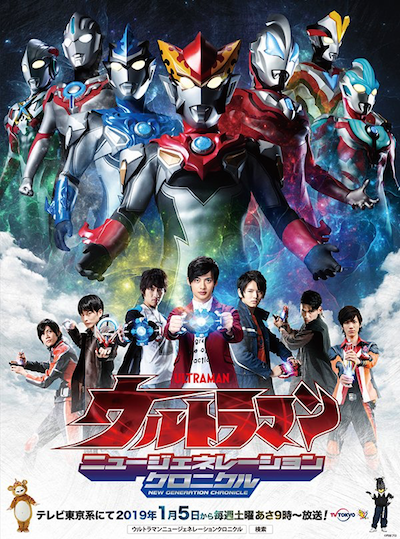俳優 尾崎英二郎に『ゴジラ』の本多猪四郎監督で役演じる !
 Ozaki plays director Ishiro Honda on "DC's Legends of Tomorrow."
Ozaki plays director Ishiro Honda on "DC's Legends of Tomorrow."
Expat Japanese-born actor, Eijiro Ozaki (“Letters from Iwojima”), currently working in Hollywood, was recently cast as the famous director Ishiro Honda (“Godzilla”) for this season’s fifth episode of “DC’s Legends of Tomorrow,” which airs tonight, November 19th, on the CW network.
Ozaki told the press that he was extremely honored to receive this role, “I worked very hard on this part, so that this director of the Golden Age of Japanese Cinema, and the genealogy of the kaiju world, won’t be tarnished.”
Directed by Alexandra La Roche, “Tagumo Attacks!!!” is set in Japan right after the Pacific War and firmly entrenched in the theme of the “kaiju eiga” (Japanese Monster Movie). The story features a young Ishiro Honda (Ozaki) before he takes up the megaphone as the director of “Godzilla.”
“This drama, based on popular US comic book characters, with Japan and a Japanese character as the central plot, is a rare opportunity, so I felt very honored when I gained the role of Ishiro Honda,” said the actor who began his career in the 1990s and starred on Broadway in a production of “The Winds of God.”
Relocating to the States in 2007, Ozaki has been featured in the US productions of “Heroes,” “Agents of S.H.I.E.L.D,” “Heroes/Reborn,” “Extant,” “Altered Carbon,” and “The Man in the High Castle.”
The actor took pride in maintaining accuracy with production team on the Japanese setting and elements, and his opinions were encouraged and respected. “Its necessary to have to courage to speak up, regarding the set dressings, props, art, costumes, etc., before the first day of shooting."
Ozaki emphasized, “Since the setting is Japan, and Japan will be reflected on screen, I spoke up; especially the scenes with the Japanese movie crew, and how they deal with shooting [Japanese movies].”
“In places where something felt incongruous, I consulted with the production staff, and also corrected and rewrote all of the Japanese signage and notations, as much my eye caught on set during the production,” Ozaki beamed.
“I would also like to draw attention to the period costumes of the 1950s, which were almost completely made from scratch, not to mention the color and design sensibilities from that era.”
“Legends of Tomorrow” Executive Producer Keto Shimizu, former Showrunner and Producer on “Arrow,” co-wrote this episode (with Ubah Mohammed), executed the research on the life of Ishiro Honda, and insisted on casting a native Japanese actor.
“During his scenes, Eijiro Ozaki tackled the role with amazing creativity and enthusiasm,” she said. “Especially where Honda recounts seeing the burnt-out ruins of Hiroshima after the war, is a touching and heartbreaking scene, expressed beautifully by his wonderful performance.”
Shimizu concluded by saying, “Our team hopes that Japanese fans will enjoy this episode, and that they’ll see we’ve done everything to invoke the spirit of the ‘kaiju eiga’ for present day.”
Excerpted and expanded from a Niconico News
story, translation copyright ©August Ragone, all rights reserved.









































